The Motor Sport Interview: Jake & Simon Hill
BTCC’s new champion and his dad on their hustle to the top – without a penny to spare – and their shared love of motor sport history and old racing cars
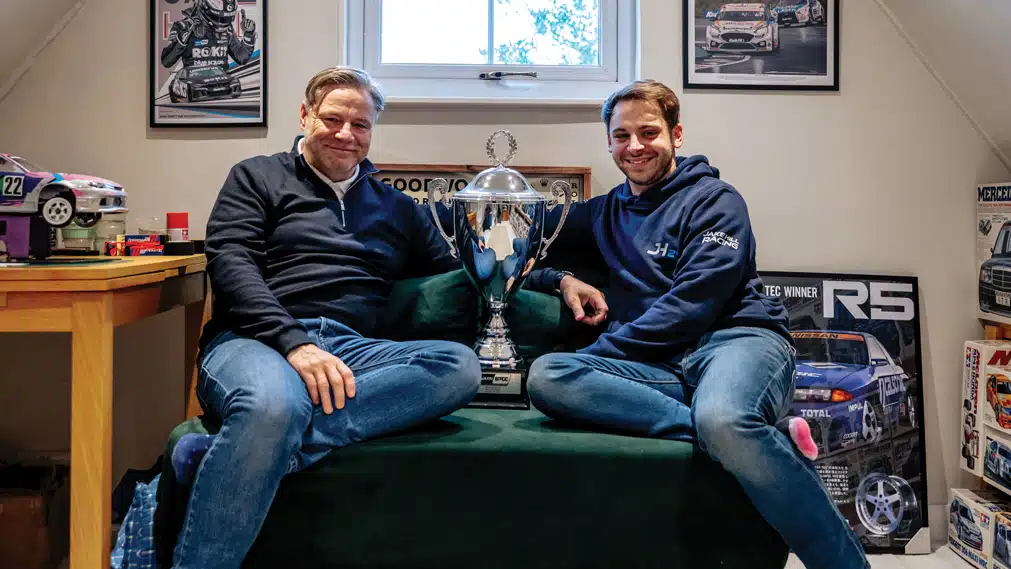
Jayson Fong
Portraits: Jayson Fong
Dad-and-lad stories, of parent-offspring bonding over the course of a plucky rise to racing glory, are common. But few are as unlikely and colourful as that of new BTCC champion Jake Hill and his ex-racing driver father, Simon. In October, 30-year-old Jake claimed Britain’s premier four-wheeled motor sport title – and his first in anything – in a gripping three-race climax at his beloved home circuit of Brands Hatch, passing title rival Tom Ingram to secure a cherished crown. Cue emotional scenes in the West Surrey Racing pit as family, friends and supporters – including ex-Formula 1 ace Mark Blundell – let rip.
For Simon, his son’s achievement was the culmination of 40 years of often desperate hustle and graft, first during his own career – which sparked but never quite took off – then for the benefit of Jake’s own climb, which, as the champion reveals, he came close to aborting through sheer frustration.
To compound his sense of satisfaction, Hill has joined a select club of BTCC champions who have conquered the series in a BMW: Frank Sytner, Will Hoy, Tim Harvey, Joachim Winkelhock and Jake’s own WSR team-mate Colin Turkington are his only predecessors. That pleases Hill, because he’s inherited Simon’s love of racing history – specifically in the metal. No other contemporary racer is as prolific or enthusiastic to sample motor sport as it used to be.

Hill’s 2024 was in the MB Motorsport BMW 330e
Jakob Ebery
Motor Sport: Jake, what pleased you about the way you won the title at Brands Hatch?
JH: The fact it was wet for the final race helped. Almost every time it’s rained we’ve won or been on the podium. Then to pass Tom for the championship around the outside pleased me most. Funnily, when Tom won the title in 2022 he pulled the exact same move on me. So a perfect way to get it done, especially at home on the Brands Grand Prix Circuit.
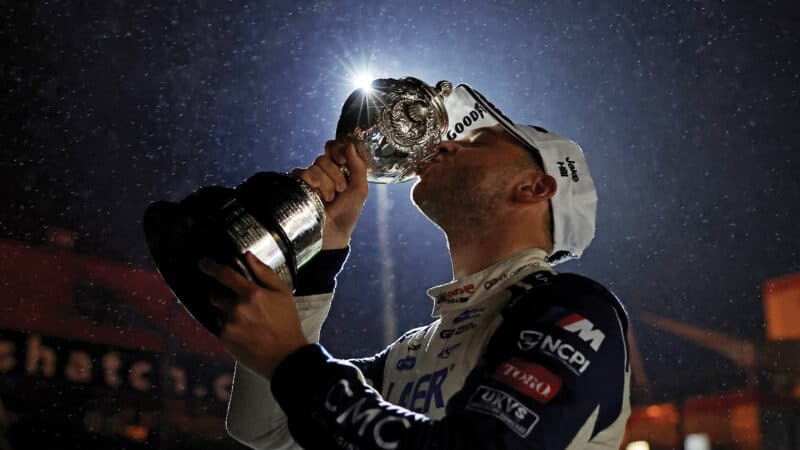
Third in 2022 and ’23, but Jake Hill’s name is on the trophy this year.
Jakob Ebery
MS: Tom was very confident when interviewed on the grid; you were reflective. It seemed you felt it would slip away…
JH: No, not at all. On the way to the grid I relaxed because I realised what a strong package we had. Because it was the first time it rained that day we got two laps to the grid instead of one. So I had more of a chance to explore lines. I felt super-confident. But Tom is always that way. Even when he’s down in the dumps, he’s chest pushed forward, shoulders back. That’s just how he is. But you are right, sat on the grid it was a moment of reflection at the very last race of what had been an amazing campaign – win, lose or draw. Eight wins, loads of podiums, a mega year.
“Almost every time it’s rained we’ve won or been on the podium“
SH: We have a ritual before a race. When it’s time to clear the grid his engineer Craig Porley gives me the look, I lean in, shake Jake’s hand and say, “Have fun, be safe, I love you.” This time, he squeezed my hand back that little bit harder. I said, “You’ve got this,” and he looked at me, but didn’t say anything. I had a feeling, as he did, that we had the right situation. There was a feeling it was going to be all right. And fortunately it was.

Winning the title in a particularly competitive era of BTCC means Jake’s championship win is all the more special
Jakob Ebery
MS: Simon, you raced at a decent national level. How do you reflect on your career?
SH: Just to get on the grid was such a big thing because there was no one in the family who was interested. My time was very much stop-start because of budget. What sums it up was when I was really desperate to start racing Formula Ford in my teens, a mate said, “The only way you’ll do it is find someone who likes motor racing, has money and wants to help you.” I was working as an import-export clerk in an office in Sevenoaks, with my Burton’s suit and dodgy 1980s tie. I had an A4 piece of paper I typed up with a photocopied picture of Karl Jones’s Formula Ford – he’s a good friend of ours now. I went round the local trading estates, knocking on doors, explaining what I wanted. Surprisingly enough, the general answer was, “No, go away” – and those were the polite ones. I must have done that consistently over 18 months. Then eventually I knocked on a door and this guy looked at me, bedraggled in the rain, and he invited me in – which no one had ever done. I told my story. This was 1985. He’d invested in a company called Microsoft, which had just paid out, he liked cars and he said, “Let’s go racing.” That’s how I got my first sponsor.
Considering I had no background in racing I did OK. But the main thing it gave me was an understanding of the sport and a fantastic network of friends, colleagues and contacts that gave us a good starting point when Jake decided he wanted to go racing. My career was for his career.

Simon on Formula Ford debut with Van Diemen RF82, November 1985
Simon Hill
MS: Jake, you were born in the middle of it all…
JH: Yes, in 1994. Dad tells me my first trip to Brands Hatch was when I was 12 days old, to watch him race Formula Ford. My first real racing memory was when he was doing Renault Spiders. I was about six. It was definitely something I wanted to do from a young age. I was and still am into remote-control cars and raced them from about 10.
Then the desire to go karting kicked in quite aggressively. But we couldn’t do it. How it all came about was Dad started commentating for ITV on the BTCC in 2007 and got me a job at Redline Racing, the Porsche Carrera Cup team, and I was their wheel washer – at the age of 12. Through that I became really good friends with loads of people, on the quad bike going to get the tyres from Michelin. We became friends with some of the amateur drivers, and Nigel Rice was my first sponsor for go-karting. Then the same people helped me fund my first year in Ginetta Juniors.
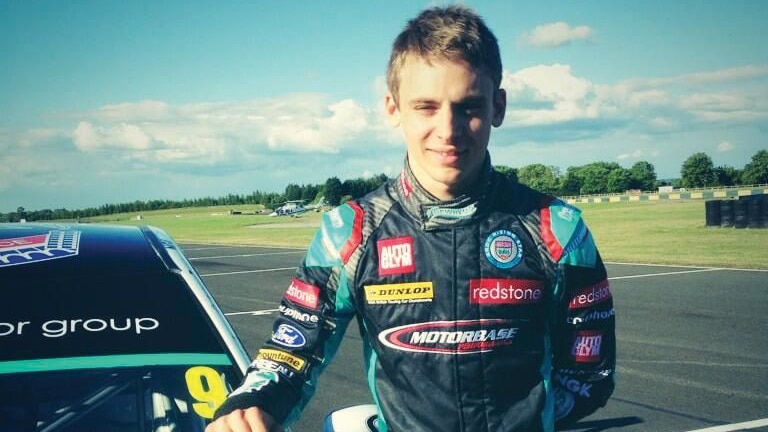
First BTCC start at 19, Croft, 2013
Simon Hill
MS: Dad is a natural gift-of-the-gab hustler. You seem quieter. But are there similarities?
JH: We are very similar and different! He does talk the talk… I am quieter, more like my mum. But one major lesson I learned was be polite.
SH: Rare. Especially in racing!
JH: People wanted to help because I was a nice lad and I became quite good at driving. That lesson has stuck with me. I’ve got so many of my historic drives today because I get on well with the owners of cars and teams, and they want me to be around as much as they want me to drive for them.

Podium spoils in the team truck at Croft, 2020
MS:Simon, you’ve seen a lot of racing parents. There comes a time when they have to be honest: is the kid good enough? When did you know Jake was?
SH: There were a couple of points early on. Jake’s very first go in a Ginetta was at Elvington, a taster day on the airfield. I’d taught him to drive around a Sainsbury’s car park a week before in a Renault Clio. Charlie Kemp, who went on to run Lando Norris in Ginetta Juniors and is a good driver himself, asked how many days’ testing had he done. His gearshifts and lines were spot on. We told him, “This is his first go.” “Don’t take the piss!”
“He’s either going to be under the lap record or in the hospital“
Then the first proper test was at Mallory Park. Ian Flux was testing a Mosler. We all know Fluxie, a larger-than-life character. He came over: “Who’s the kid in the red car?” “That’s my lad.” “He’s either going to be under the lap record or in the hospital if he keeps driving like that!”
Then we did some testing at the start of 2009 and his instructor was Phil Glew, who went on to win the Clio Cup that year. Very experienced, very knowledgeable. He got out and said, “He’s got such good feel for grip.” That made me think it was worth a go.
The final thing: whenever I saw Jake get in anything he was almost immediately down to a time, in some cases a time people had been chasing all day. To quote the great Roger Penske, “You can tidy up speed, you can’t speed up tidiness.”

Jake with team-mate Mark Blundell, a key figure in his rise
Simon Hill
MS: So Jake, you knew you wanted to do this, you had good contacts – but no money. How did you get going?
JH: It was all thanks to Dad. I don’t know how he did it. He begged, stole and borrowed! Those first few people who helped me do karting, those guys in the Porsche paddock – great people. They gave me enough money to do the Ginetta winter series in 2008 at Snetterton and Rockingham, and we got a podium straight away. I loved Ginetta Juniors. My 2010 season was one of my favourites in terms of driving. The winter series showed I had the ability. But there were so many stressful family times.
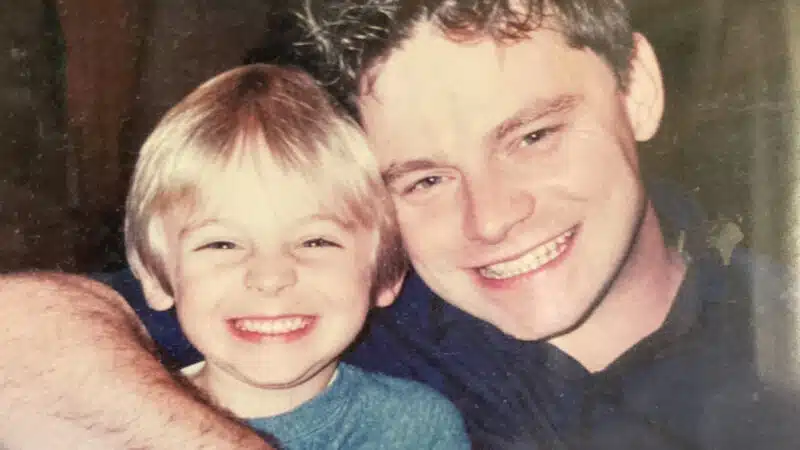
Father and son through the years
SH: One simple technique I had when I phoned people, I’d infer that I’d got most of the money already, I just needed a bit more to get us over the line. If Jake needed £5000 to do a Ginetta weekend I’d suggest we’d got £3000. I’d probably got £500. It’s amazing how many people would say, “OK, I can put £1000 in if you put a sticker on the car.”
One story that sums it up was when Jake got into G50s. At Donington I had somebody who said, “Yeah, no problem, I’ll send you the money.” We got to the test day, no money and I couldn’t get hold of the guy. The team very kindly let us test, but on race day we had to tell them we had no money and couldn’t race. One of Jake’s sponsors, a race car insurance company, MMC, were on their way and I needed three grand. I’d got a grand from somewhere. They called me on their way up and I explained my problem. They asked how much I needed and they committed to the money on the phone to the team there and then. Jake stuck it on pole and won the race.
What always impressed me in those moments was at just 17, he knew we couldn’t afford him to crash, and he could see what it was doing to me in terms of my stress levels. Yet he still kept his head and did the job in the car. Again, that’s when I knew how good he was. Mentally he’s so strong.
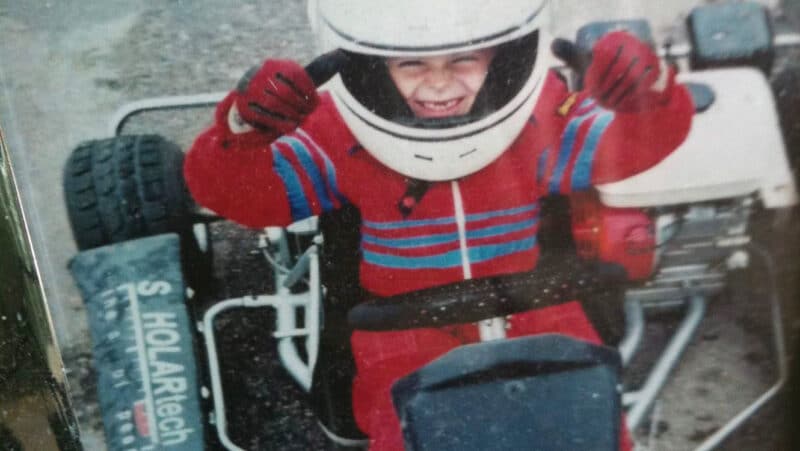
First kart race, age seven, at Bayford Meadows
Simon Hill
MS: How did you end up in touring cars?
JH: It was always what I wanted to do. We were good friends with David Bartram [owner of what was then Motorbase] and he loves Kent and Kent drivers. It’s been his home forever. So he gravitated towards me. I had the chance to test and shake down Liam Griffin’s touring car a couple of times at the end of 2012. Then Liam had to step down during 2013 and very kindly still paid for the car to run. We still had to find some money.
SH: It was still £15,000 I had to raise, in three days – so it wasn’t easy. A combination of coffee and vodka and staying up all night to send emails. We got it sorted, a grand here, £500 there. Everybody was so excited. That was the first race he’d done all year. From 2012 to 2016 he didn’t do a full season. A handful of races. I thought that was how it would always be.

Jake credits his dad for getting him this far
MS: Did you both maintain the belief it was worth persevering? You must have had doubts.
JH: Absolutely, so many times. I thought, “We can’t keep going like this. It’s got to stop at some point.” But we just kept doing what we could. After the touring car round at Croft, which went pretty well, we got in Rob Austin’s car for a solid weekend at the end of the year.
Then I did some British GT in a 997 Carrera Cup car, and Carrera Cup GB rounds. We did whatever we could, whenever there was a deal or someone had pulled out. We kept our foot in. Then there was a deal that came about through Tony Gilham and Team Hard to have a cheap deal in touring cars. We knew what we were getting into, but it was a chance to do a full season in 2016. We had to go for it.
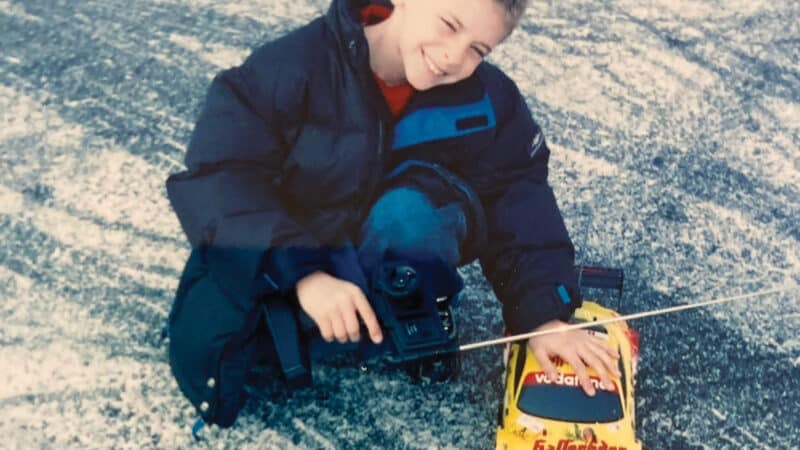
Jake at 10 with Laurent Aïello DTM Audi RC model.
Simon Hill
SH: The budget that year was heavily subsidised by Tony. So we’ll always be grateful for that initial opportunity. But here’s how things have moved on. At West Surrey, two or three times a weekend a new set of brakes go on the car. That year, we had a new set of brakes every other race weekend. We had no race engineer and Jake was a complete novice. Jake and the team manager would throw a set-up at it. There was no pressure and Jake just drove the wheels off the thing. At one race Rob Collard was running behind him in a WSR BMW and we thought he was bound to give him a shove, as was the way back then. But fair play to Rob, he said the kid was driving beautifully and he couldn’t get past him. That was a highlight of the year for me.
MS: Did your time at AmD change everything?
“I was hating it. I didn’t want to do it any more. So we stopped“
JH: Yes, completely. Before, in 2018, we stopped halfway through the year. I was hating it. I didn’t want to do it any more. We were on our way to Croft and I said, “If I never have to drive a racing car again that’s fine, as long as I don’t have to drive this thing.” So we stopped. I almost convinced myself that was it.
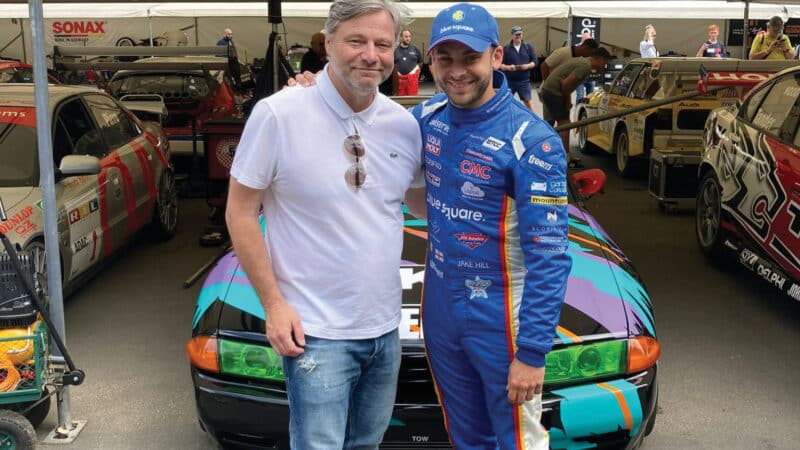
Hills at Goodwood Festival of Speed.
MS: Simon, how did you feel when Jake said he wanted to stop in 2018?
SH: I was torn. I wanted to do what he wanted to do. I trusted his judgement, but my commercial head was saying we couldn’t afford to stop, we’d lose our sponsors and wouldn’t get back in again. But it was the right thing to do, for both of us. We were getting mentally destroyed. He was qualifying 22nd or 23rd. He got a podium in the first round by pure tyre choice: the old slicks thing when it was still damp, and finished P2. That gave us a false dawn. The year rapidly went downhill.
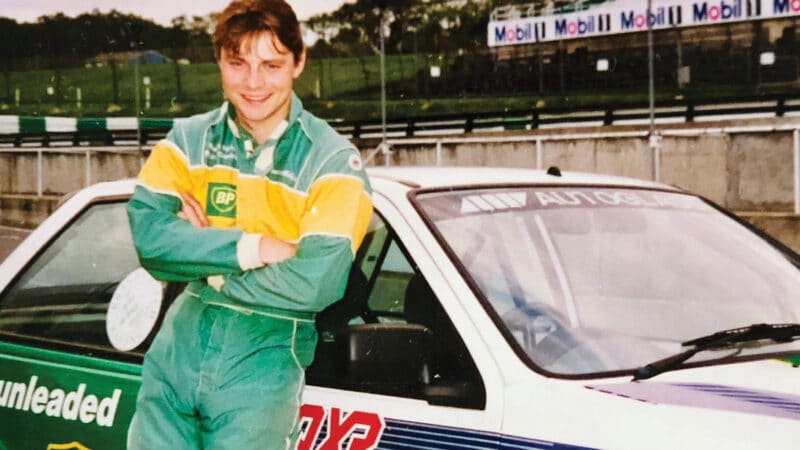
Simon with Brands race school XR2 Fiesta, 1992. He was an instructor at the track for 20 years
JH: Then our lord and saviour Shaun Hollamby, a lifelong friend [and then-owner of AmD], offered us a great deal for his Audi in 2019. It was a nice combo: a decent engineer, some decent mechanics and some bloke called Mark Blundell as my team-mate. I would say that was when my proper touring car career started. It was a year of pure fun, a chance to enjoy racing again. I loved working with Mark. Dad was so much less stressed. With Shaun there’s always a way to sort problems.
SH: Shaun took me to one side and said, “This kid is too good just to give up.” He told me to get off my arse and find some money, and he’d do his bit. We had to find about £150,000, which by 2025 standards wouldn’t even get a subsidised drive. I had to work hard to find what we needed. But we managed it through Shaun and our late friend Dan Kirby, who ran Trade Price Cars and who had bought the two Audis, then brought Mark in. Both Jake and I remember getting a call from Shaun saying, “I’ve just signed the other driver.” Then the phone crackled. Did he just say Mark Blundell? I was a fanboy at first. Back in the 1980s I aspired to be like two drivers: Jason Elliott and Mark Blundell. So that was incredible.

Jake struggled in Volkswagen CC in 2018
MS: There are some parallels with Mark’s career, how he rose despite a lack of funding.
JH: He does see a bit of himself in me. In 2020 he decided to put his name above the door, tie in with Shaun and have the two Hondas – and I’ve driven for MB Motorsport ever since. Every year they’ve just gone up a level, and we’ve ended up as BTCC champions because of it. They’ve thrown the world at it and commercially they are an extremely strong package. The MB Partners side goes out and gets the sponsors and partners for the year, and they are incredibly good at their job. Mark as the figurehead is a big part of it, Theo Paphitis [of Dragons’ Den] is the chairman, but Alex Watts is effectively my driver manager. He is sensational. He’s my age and I’ve never met anyone like him in terms of work ethic.
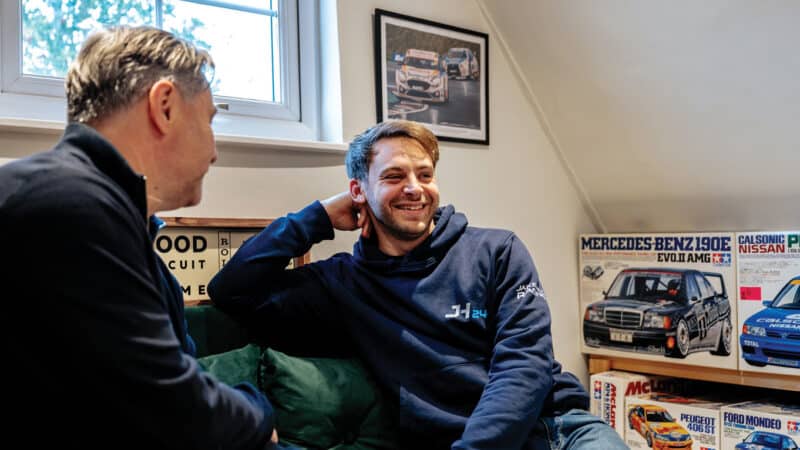
“Fancy helping me tidy the garage, son?”
MS: And now you are on the champions’ roll call for both West Surrey Racing and BMW.
JH: I’m not sure which one I’m more pleased about! Both mean the world to me. Dickie [Bennetts] has got an incredible wall of champions’ helmets in his office, from Ayrton Senna, Mika Häkkinen, Rubens Barrichello, all the way to Colin Turkington, who was his last champion until now. To be on that wall is pretty special. I’ll have to sacrifice a helmet… But that’s not too bad!
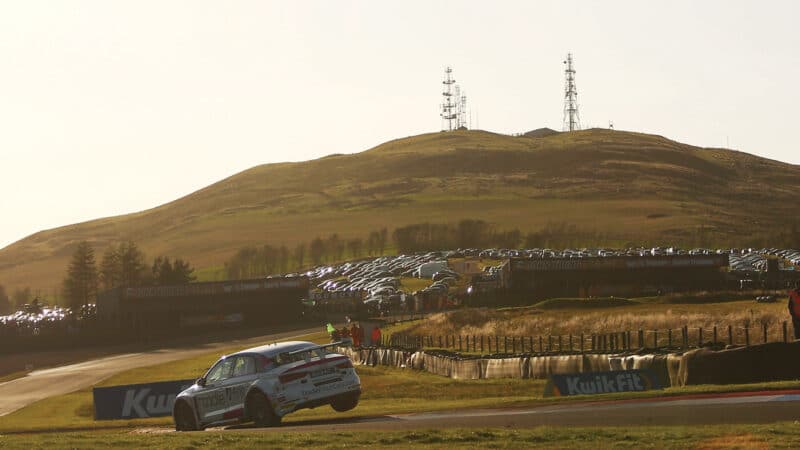
First BTCC win at Knockhill, 2019
As for BMW, I still pinch myself in terms of the drivers I’ve joined. But then you look at the BTCC trophy and that’s pretty surreal. Also how many amazing drivers have missed out on being on that trophy, especially BMW drivers? We’ve made our mark. I can’t wait to see my name engraved on it. You don’t realise how many dings and dents it has, from the champions who have dropped it to God knows what! It’s incredibly special and your name is on it for ever.
MS: Speaking of history, you have an incredible love for historic motor sport. Of the many cars you’ve driven what are your highlights?
JH: Well, I’m 107 racing cars in now… I split them into my favourite touring car, Le Mans car, Formula 1. You can’t have one favourite. My favourite touring car? The Calsonic Nissan Skyline R32 GTR. I’m a huge Nissan and Japanese motor sport fan. Le Mans-wise, the Panoz LMP07 is a pretty unique and cool car to drive. I’ve driven four or five F1 cars and the one I’ve enjoyed most is the 1987 Leyton House March, which fitted me perfectly. At the same time, the 1993 Footwork was cool and then there was the one I raced, the ex-Rikky von Opel Ensign. But my favourite chassis… there’s two. The ex-Tommy Byrne 1982 Ralt RT3 and the Chevron B26 sports car with a 2-litre BDG. They are very similar to drive. Both, for me, the ultimate driver’s cars.
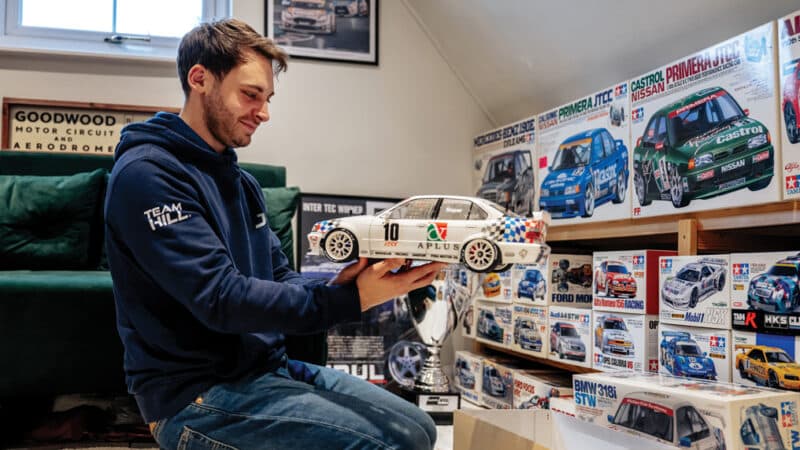
Jake is an avid collector of Tamiya radio-control models
Jayson Fong
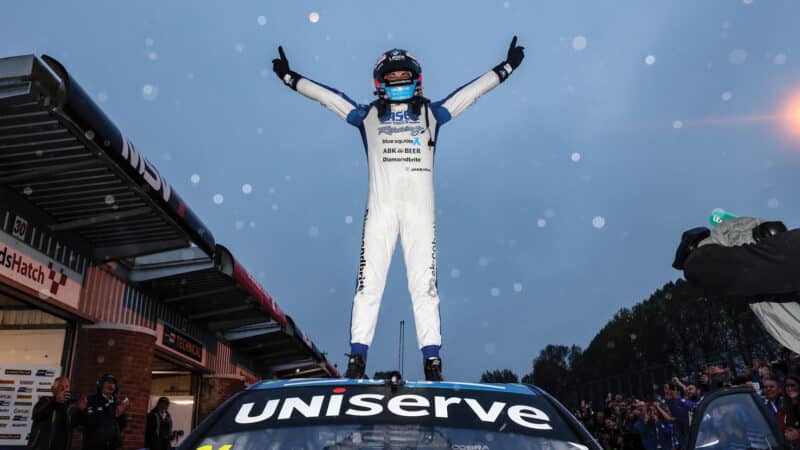
Now he has achieved in a BMW what Steve Soper couldn’t
Jakob Ebery
SH: Recently Jake shook down the 1974 Hesketh 308 – and my first motor racing hero was James Hunt. One of the reasons Jake is No24 in touring cars is because of that Hesketh. That and Jeff Gordon.
MS: This BTCC era is strong. What’s your take on it and your rivals?
JH: I guess you don’t think about it when you are in it. But yes, on reflection, I can say I’ve won a championship in one of the hardest eras. Ash [Sutton] is probably the toughest I’ve come across. In some ways we are very similar: quite aggressive when we need to be and smart in racing. Tom [Ingram] is the professor and does whatever he needs to get the job done. Colin [Turkington] has been an incredible team-mate, and also a real pleasure to race with. He’s still so fast at 42. There are always corners where he’s faster than me and he’s really helped me come on as a driver, because he’s pushing me to the edge. In terms of on track, he hasn’t helped me at all in the three years we’ve been together – until it mattered, at Brands on the final weekend. I couldn’t have asked for a better team-mate and I’ll be forever grateful because there’s no question that he helped me win the championship. They’re all hard work and I guess when we look back in years to come we’ll see it was an amazing era.
“I wake with a smile on my face knowing my boy is champion“
As for these times, I’m glad the hybrid era is coming to an end in 2025. Us drivers didn’t like it. It was a little bit too synthetic [performance-balancing power boost will now come from the turbo alone]. The old weight ballast system was so equal. You put 75kg in any car and it’ll do the same job. You turn down the hybrid and the big debate we had with rear-wheel drive is we supposedly have the same power outage to the motor when we hit the button. But for a front-wheel-drive car, their motor is on the end of the input shaft directly over the front wheels and gearbox – ours has to go through a propshaft, a diff and two driveshafts. Scientifically we have way more loss, so our hybrid deployment is nowhere near as powerful as the front-wheel-drive cars. They will argue it to the cows come home, but it’s the simple truth. I’m pleased we’re now going down the sustainable fuel route because that’s a great advocate for motor sport and combustion engines.
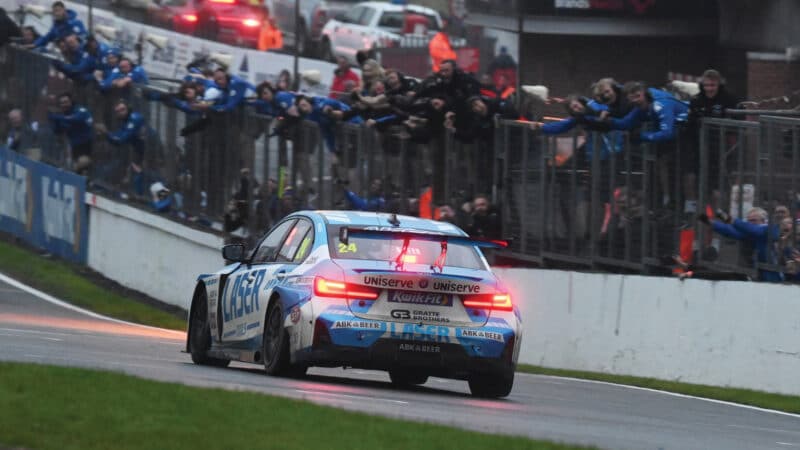
BTCC in the bag… sports cars to come?
Jakob Ebery
MS: So, what’s next? You’ve always been very open about your Le Mans ambition.
JH: I just love racing cars and I want to drive everything. For the immediate future, it looks pretty set I’m going to do another year of touring cars, which is fantastic. Also I’ve always wanted to carry a No1. We’re not quite there yet, but it looks pretty set we’ll go with MB and West Surrey again. Alongside that the historic stuff is likely to ramp up once more, which is cool. But yes, there are also a couple of opportunities I am working on to make my sports car jump. I can’t disclose anything yet and it’s not even massively close. But there are a few things I’m working on to see if sports cars is a valid option.
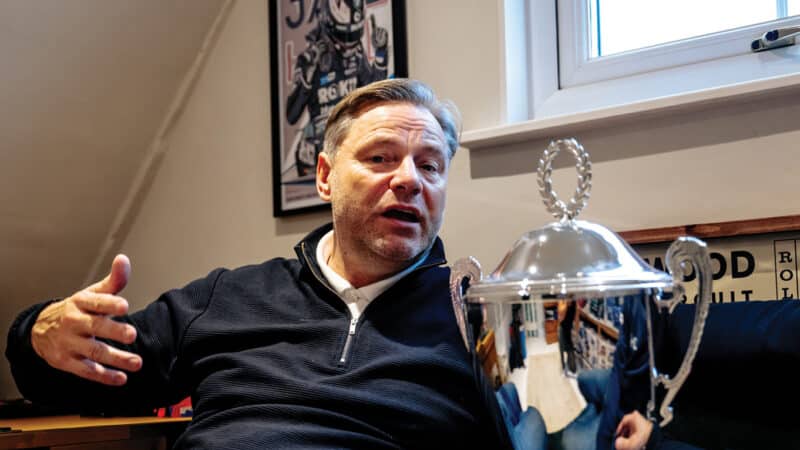
Jake’s love of racing history comes from Simon
MS: Simon, what does it mean to you to see your son where he is now?
SH: When Jake won the championship there was a huge weight lifted off our collective shoulders. My 40-odd years of trying to do something in racing rolled into one with Jake’s success in a shorter period of time, but at a much higher level than me. It’s the sheer pride that I had total belief in his ability to do it, in terms of speed, racecraft and his ability to deliver. Somehow we’ve managed to keep this thing moving.
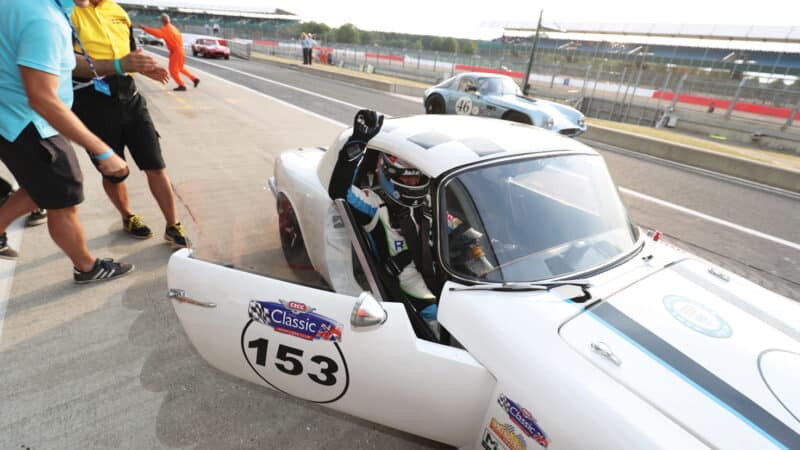
Jake in a Lotus Elan in the 2018 Silverstone Classic
The people on this journey have been sensational, almost into the thousands who have believed in him. In simple terms, when Louise Goodman stuck a mic under my nose just as Jake was getting out of the car, I just said, “That’s my boy.” I wake with a smile on my face, knowing my boy is a champion. Then again, it sounds cheesy, but he’s always been a champion in my mind.
